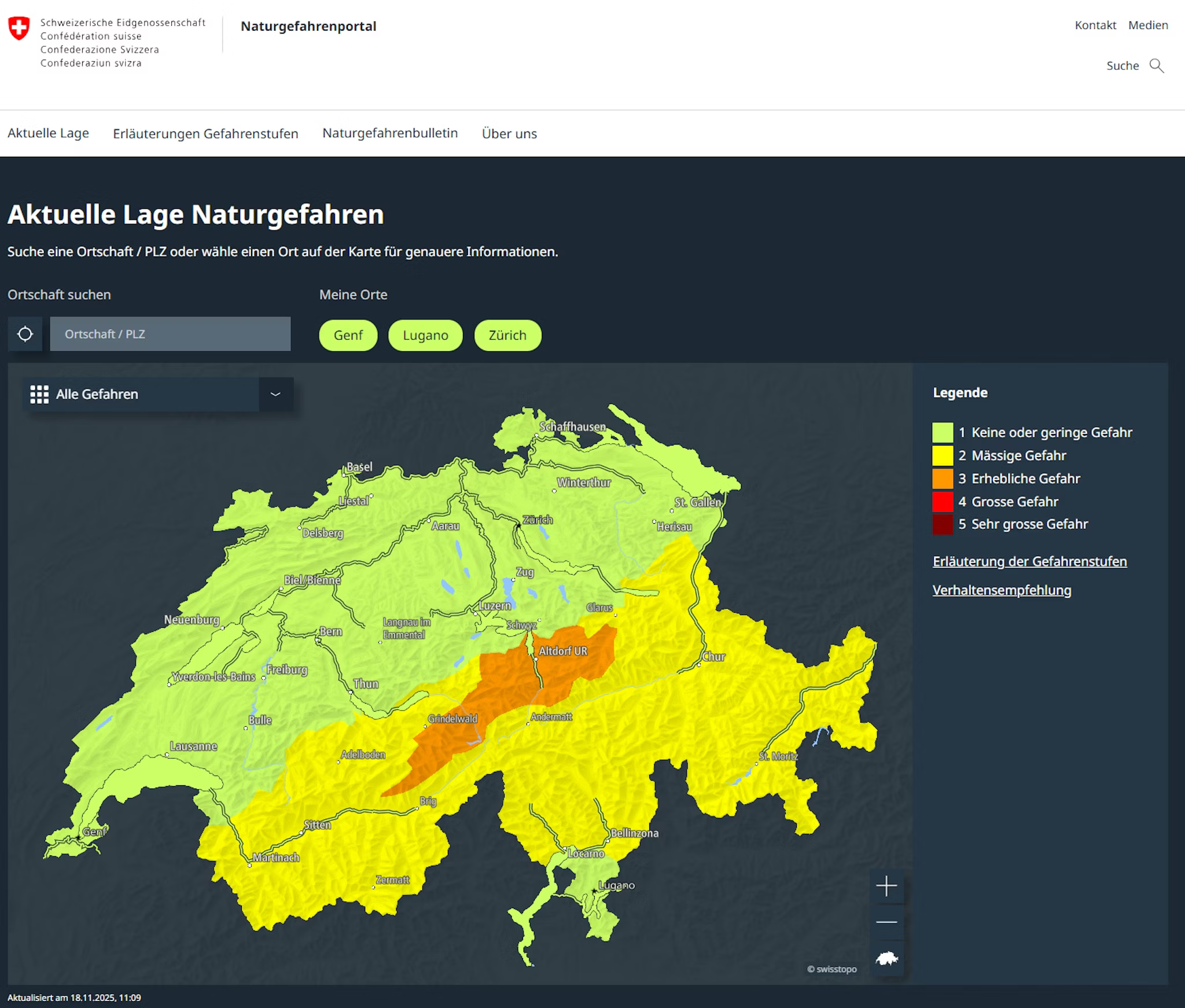Heat wave among top 3 risks in Switzerland
The Federal Office for Civil Protection is conducting a comprehensive national risk analysis "Disasters and Emergencies Switzerland". As a result, the 2015 risk report not only lists 33 relevant events, but also the top ten risks. The risk "heat wave" is ranked third and is defined as follows according to the report: "hot spell with average temperatures of more than 35 °C and frequent tropical nights over several weeks".

The national risk analysis "Disasters and Emergencies Switzerland" also examines hazards that have rarely or not yet occurred in Switzerland.
In the report "Disasters and Emergencies Switzerland - Technical Risk Report 2015"A total of 33 hazards relevant to population protection are systematically analyzed in terms of their probability of occurrence and the potential extent of damage in order to determine the respective risk.
The greatest risk identified was a possible prolonged severe power shortage. This refers to a power shortage of 30 percent for several months in winter. Such a scenario would lead to major personal injuries and, in addition, to immense economic and immaterial damage for the economy and for society. In total, damages of more than 100 billion Swiss francs are to be expected. The frequency of occurrence of such an event is estimated at once in 30 to 100 years. The risk with regard to a possible pandemic is similarly high: with roughly the same estimated frequency, the extent of damage here is expected to be 70 to 80 billion Swiss francs.
In addition, there are a number of other potential disasters and emergencies that also pose a relatively high risk. The ten biggest risks are:
- Power shortage
- Pandemic
- Heatwave
- Earthquake
- Regional power outage
- Storm
- Failure ICT
- Wave of refugees
- Crash flying object
- Animal disease
The national risk analysis "Disasters and Emergencies Switzerland" is an important basis for the overarching, systematic planning of measures to prepare for possible disasters and emergencies. The cantons can also use the findings and products from the national analysis to further develop their own cantonal disaster preparedness. The most important result of the 2015 risk report is that it enables a transparent comparison of the hazard potential of very different events. The 2015 Risk Report thus forms an important basis for the further development of disaster management in the context of Switzerland's overall security policy.
Go to Disasters and Emergencies Switzerland" brochure









